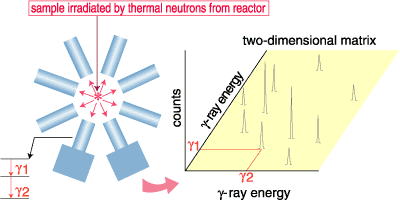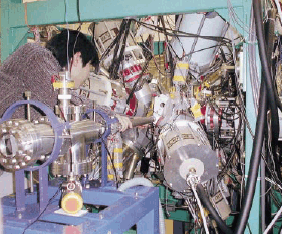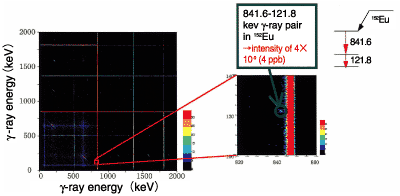Widely used neutron activation analysis utilizes a single detector to detect gamma-rays from a neutron-activated sample. The energy resolution is approximately 1/1,000 for high-resolution germanium detectors. The radioactive nuclei emit more than ten gamma-rays on average, so that if the sample includes many elements, the number of gamma-rays exceeds one thousand, making it difficult to resolve all the gamma-rays.
By detecting multiple coincident gamma-rays emitted simultaneously from many radioactive nuclides and by analyzing a g-g two-dimensional matrix, we could improve the energy resolution by a factor of one thousand. This indicates that one can completely separate as many nuclides as there are present in a sample (even for 2,700 nuclides so far found in nature).
The multiple gamma-ray detection method has been used for nuclear structure study at high excitation energy. We applied it for the first time to neutron activation analysis and demonstrated that 27 elements can be simultaneously quantified without chemical separation, for standard rock samples, JB-1a and JP-1, issued by the Geological Survey of Japan. It is also shown that 49 elements can be quantified simultaneously by this method. Furthermore, the background level can be greatly suppressed and very weak gamma-rays can be detected: a high-sensitivity of ppb (10-9) order could be achieved. This new technology is now expected to contribute to various fields, such as environmental, medical, space and earth sciences, and exploitation of natural resources etc. |


